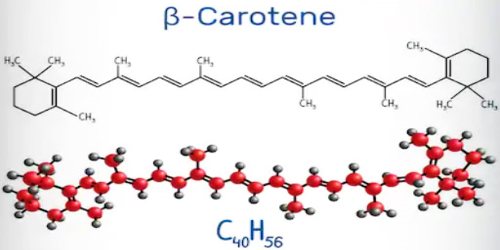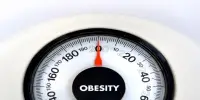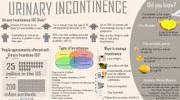Beta-Carotene (β-Carotene) is a red-orange pigment found in plants and fruits, especially carrots and colorful vegetables. It is a member of the carotenes, which are terpenoids (isoprenoids), synthesized biochemically from eight isoprene units and thus having 40 carbons. Among the carotenes, β-carotene is distinguished by having beta-rings at both ends of the molecule. β-Carotene is biosynthesized from geranylgeranyl pyrophosphate.
The name beta carotene comes from the Greek “beta” (β) and Latin “carota” (carrot). It is the yellow/orange pigment that gives vegetables and fruits their rich colors. H. Wachenroder crystallized beta carotene from carrot roots in 1831, and came up with the name “carotene”.
It’s turned into vitamin A in the body, so it can perform the same jobs in the body as vitamin A. β-Carotene is the most common form of carotene in plants. When used as a food coloring, it has the E number E160a. The structure was deduced by Karrer et al. in 1930. Beta carotene’s chemical formula – C40H56 – was discovered in 1907.
Isolation of β-carotene from fruits abundant in carotenoids is commonly done using column chromatography. It can also be extracted from the beta-carotene rich algae, Dunaliella salina. The separation of β-carotene from the mixture of other carotenoids is based on the polarity of a compound. β-Carotene is a non-polar compound, so it is separated with a non-polar solvent such as hexane. Being highly conjugated, it is deeply colored, and as a hydrocarbon lacking functional groups, it is very lipophilic.
The main sources of beta-carotene are:
- yellow and green (leafy) vegetables – such as spinach, carrots and red peppers
- yellow fruit – such as mango, papaya and apricots
The following foods are rich in beta carotene:
- Apricots
- Asparagus
- Broccoli
- Carrots
- Chinese cabbage
- Chives
- Dandelion leaves
- Grapefruit
Herbs and spices – chilli powder, oregano, paprika, parsley
- Kale
- Ketchup
- Many margarines
- Onions
- Peas
- Peppers
- Plums
- Pumpkin
- Spinach
- Squash
- Sweet potatoes.
Facts on Beta-carotene –
Here are some key points about beta carotene:
- Beta carotene is a red/orange pigment found in many fresh fruits and vegetables
- Beta carotene is converted into vitamin A, an essential vitamin
- Vitamin A is toxic at high levels
- Beta carotene is a carotenoid and an antioxidant
- Foods rich in vitamin A include onions, carrots, peas, spinach and squash
- One study showed that smokers with high beta carotene intake might have an increased risk of lung cancer
- Some evidence suggests that beta carotene might slow cognitive decline
- Beta carotene supplements interact with certain drugs, including statins and mineral oil
- Beta carotene might help older people retain their lung strength as they age.
Beta-carotene is used to decrease asthma symptoms caused by exercise; to prevent certain cancers, heart disease, cataracts, and age related macular degeneration (AMD); and to treat AIDS, alcoholism, Alzheimer’s disease, depression, epilepsy, headache, heartburn, high blood pressure, infertility, Parkinson’s disease, rheumatoid arthritis, schizophrenia, and skin disorders including psoriasis and vitiligo.
Beta-carotene is also in used in malnourished (underfed) women to reduce the chance of death and night blindness during pregnancy, as well as diarrhea and fever after giving birth.
There’s no evidence the beta-carotene we get from food is harmful. But beta-carotene supplements have been found to increase the risk of lung cancer in people who smoke or have been heavily exposed to asbestos at work. It’s possible taking large amounts of beta-carotene supplements could also increase the risk of cancer in other people. Some research suggests having large amounts of vitamin A over a long period may affect people’s bones and make them more likely to fracture when they’re older. Beta-carotene doesn’t have this effect.
Information Sources:
















